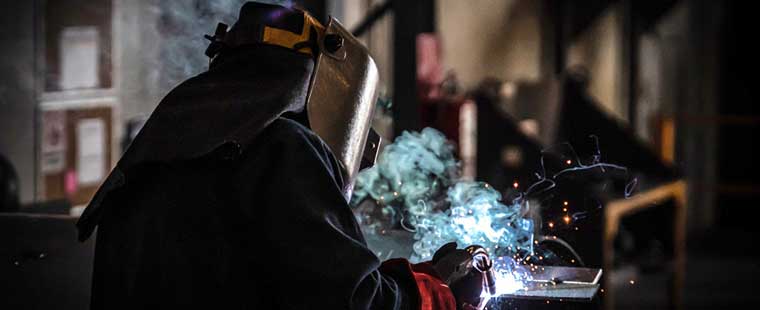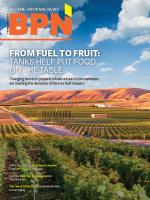
Hard times result in changes in all aspects of life. Difficult circumstances force us to become much more dynamic in our search for opportunities to continue to produce value for our companies, our families and ourselves. In the professional sense, these times force out complacency, and those of us who are left are better equipped to face the challenges of the new normal.
In this post-pandemic world, manufacturers have been faced with abundant challenges, such as a workforce shortage, interruptions in the supply chain, a looming recession and record inflation. These factors have forced leaders to pivot their traditional processes and methods and have opened their eyes to improved ways of doing business.
In the end, a business leader need only ask one primary question: Where should the business allocate its resources? Should the company accept the reality of an inflationary market and attempt to pass along those costs to its customers, or can they be allocated more effectively toward improvements in the supply chain and processes that will result in cost savings that offset the impact of inflation?
In order for a tank manufacturer to conduct its business, it must first procure the required materials for assembly. These include steel, valves, gauges, paint, consumables and assorted subassemblies. Volatility in the steel market, as well as steadily increasing prices in consumables and subassemblies, have resulted in major strains on manufacturers as well as the industry as a whole.
Manufacturers have had to face capital allocation trade-offs in order to curtail these risks and maintain competitiveness in the market. Such trade-offs include purchasing raw materials directly from producers instead of distributors, exchanging the distributor price spread for the carrying cost of inventory. Others opt to maintain distributor contracts with benchmark prices and hedges in attempts to gain an edge on the movements of the commodity, which can be effective but also add risk to the buyer if their speculation was incorrect.
Another option is to look for benefits internationally through commodity traders and purchase materials from lower-cost countries, but this may also incur risks, such as transportation interruptions (as we saw with the Suez Canal container ship blockage and the major buildup of vessels outside of Long Beach), price fluctuations due to the long lead times associated with international purchase, cost of capital as these transactions are usually cash up front, and quality risks. Each of these strategies requires a large amount of analysis and risk evaluation, as mistakes in the decision can result in increased costs and a loss of competitive positioning.
Other materials that go into manufacturing tanks do not fluctuate as much as steel and face more of a stable upward trajectory, requiring supply professionals to put into practice different types of strategies while negotiating these changes on the shop floor. Bundling is an effective option used to reduce the price of consumables. Instead of purchasing standard packaged goods such as welding wire or paint, the purchaser can explore purchasing bulk packaging, which reduces the cost of the materials and shop floor changes, saving time and production costs. These require the company to put forth more money upfront but receive savings on the back end. They also require capital spending to manipulate new packaging, as well as adapt them to serve the process.
For the more transparent companies, another effective strategy used to combat inflation is to pool resources between contemporaries. That means finding similarities between products and using them to increase purchasing power with material producers. This requires a large degree of maturity and mutual respect between companies, but it can be a powerful tool.
Finally, companies willing to invest time and capital toward supplier development will be rewarded with a more strategically located, lower-cost and loyal vendor. The results of this strategy are more long term than the others but work for increased stability in ensuring supply and costs are maintained.
Many businesses face times of economic uncertainty with a slash and burn tactic in which they seek to reduce costs and expenses to the maximum. A few examples are overhead reduction through layoffs, travel restrictions, suspended training sessions and shortened work weeks.
While this strategy does result in short-term savings, I would argue that they are counterintuitive to the goals of the company, and that the opposite should be enacted. Times of economic uncertainty should be drivers of capital investment in the productive process, which includes updating and upgrading machinery, personnel training and increased resources destined to bring our reps closer to customers.
While allocating resources into capital spending during an inflationary period might sound ludicrous, it is extremely beneficial to bring down production costs that offset the impact of the macroeconomic situation. Updating machinery brings down maintenance costs, downtime, energy usage and even consumables.
Newer machinery can also result in improved processes and quality, reducing reject rates, reworks, inspection requirements and associated labor costs, and even customer complaints (resulting in increased sales and improved reputation). Also recommended is to investigate processes that can be automated, which results in increased output and reduced direct labor costs.
While it’s tempting to suspend workforce development and proceed with layoffs, visionary leaders double down on training to improve shop floor capabilities, eliminate overlapping positions and ensure the stability of critical positions in a difficult labor market. This requires leaders to enter into an agreement with employees, share with them the situations the company is facing and reiterate the company’s commitment to their workforce and values. The engaged shop floor worker will respond with ideas of their own to improve processes and reduce costs.
A manufacturer’s relationship with its customers is of utmost importance, especially in times of economic uncertainty. Maintaining or even increasing expenses to visit with and discuss with customers how the market is impacting everyone in the supply chain, reiterating their value to the company and inviting them into the formulation of the strategy to improve costs will generate enormous value for the company.
This form of interaction can result in the customer putting skin in the game with the manufacturer, entering into long-term contracts that enable the manufacturer to leverage vendors with higher volumes and projections and bring down costs. This agreement will also benefit the customer, as they can negotiate favorable pricing and shared savings.
Manufacturers that are unwilling to adapt will fall by the wayside while innovative leaders utilize creativity to find their way through the fog. It may be cliché, but these times require empowered leaders to think outside the box — or in this case, the tank.


